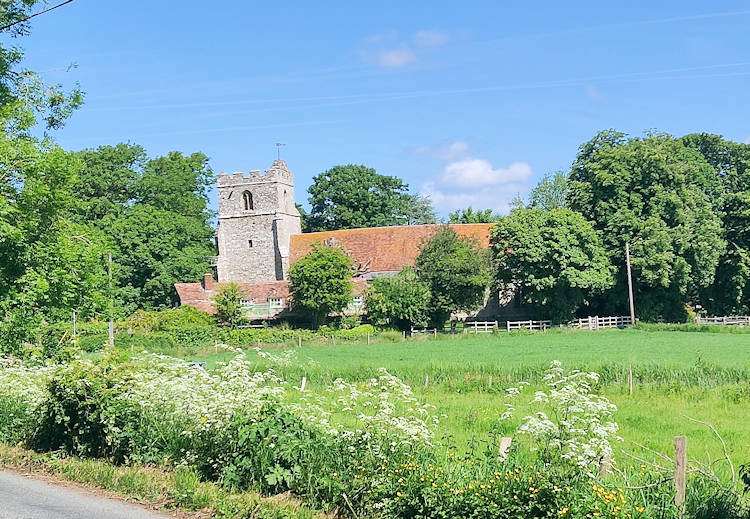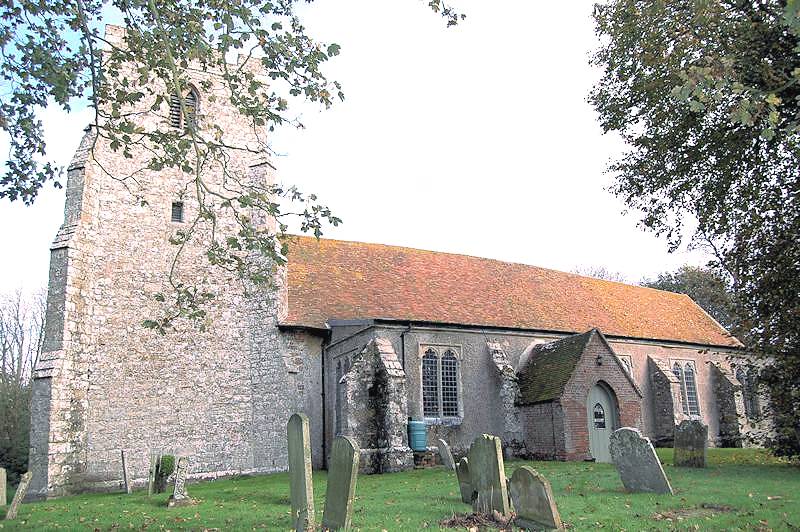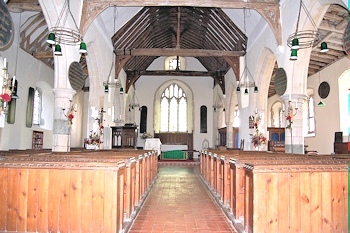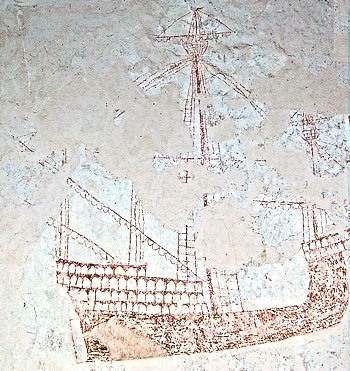St Dunstan, Snargate

St Dunstan Church ![]() location map
location map
St Dunstan in Snargate was built in c1200 and comprises chancel, nave, north and south aisles, a south porch and a tower. It underwent considerable "restoration" at the hands of Rev. Edward Wilkinson in 1871 which removed many of the ancient features.
The present nave dates from around 1200; it was enlarged around 1250 with aisles to the north and south. The resulting arcades are simple but handsome affairs of four-pointed Early English Gothic arches on round piers. The nave roof is magnificent with perfect tie beams and king posts, dating from the 16th century.
The north aisle roof, which is unusually gabled, is older still, dating from the 14th century. Its trusses have decorative bosses, depicting (from west to east): foliage, a spread-eagle, a cross fleury, the initials 'WN' and, against the east wall, the arms of Sir john Copuldlike, whose wife, Joane, inherited the Manor in 1399.

The chancel was added in the 14th century and has two bays of arcades to what were once the north and south chapels, with octagonal columns. There is, unusually, no chancel arch, although the position of the rood-screen can clearly be seen, as can the remains of the staircase which went up to it.
During the 15th century, the robust Perpendicular Tower was added, dating from around, and also the aisle windows. The tower arch is particularly impressive, framing a textbook late Gothic window. Finally, the small brick porch was added in the 18th century.
Pride of place goes to the wall painting of a ship on the north aisle, dating from 1500, which had been hidden for many ships. So good is the painting, that it can be dated to a type of 'great ship' from the period 1480-1520, of perhaps 800 tons, with four masts, a forecastle, half-deck and quarter deck. ![]() Find out more
Find out more

The Nave
There is a local tradition that such a painting of a ship on the north wall and opposite the main door of a Marsh church indicated that the church was a safe place in which to hide smuggled goods. Indeed in 1743, a large seizure of tobacco was made in the belfry, and a cask of hollands (Dutch gin) was found under the vestry table!
St Dunstan was one of the many of medieval churches on the Marsh that were involved with smuggling, their isolation making them good places for the smugglers to hide their contraband goods before their distribution.
The Reverend Richard Harris Barham, famous for his Ingoldsby Legends, was rector at St Dunstan in Snargate from 1817 to about 1821. In 1880/90s, Snargate was also home to artist Harold Gilman, sometimes called the English Van Gogh, where his father was Rector.
![]() Churchyard Monumental Inscriptions
Churchyard Monumental Inscriptions
![]() Historic Churches Homepage
Historic Churches Homepage
![]() Visitors Homepage
Visitors Homepage
![]() History Homepage
History Homepage

Painting of Ship on inside wall


















